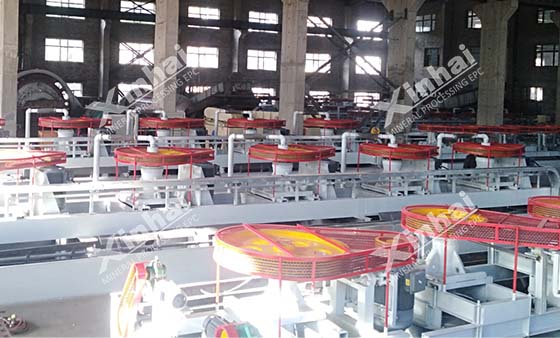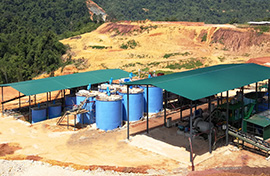-
 E-mail
xhcnlite@ytxinhai.com
E-mail
xhcnlite@ytxinhai.com
-
 Call Us
008617307193314
Call Us
008617307193314
 E-mail
xhcnlite@ytxinhai.com
E-mail
xhcnlite@ytxinhai.com
 Call Us
008617307193314
Call Us
008617307193314
2025-06-24 Views: 1369
Warm Tip: If you want to know more information, like quotation, products, solutions, etc., please Click here ,and contact us online.

Copper oxide is a valuable copper source found in minerals like malachite (green), azurite (blue), cuprite (red), and chrysocolla. These ores form when copper sulfides weather over time. But extracting copper is not easy—the ore is often crumbly, mixed with clay/water, and contains other minerals.
Most people use flotation to extract copper from copper oxide ores. When flotation has problems, they add chemical methods. The flotation method depends on the chemicals used. Here are the 5 most common ways:
1. Grind ore + water into slurry.
2. Add sulphide chemicals (sodium sulphide, hydrogen sulphide) in small doses at controlled pH.
3. Use boosters like ammonium sulphate for better sulphide coating.
4. Finally, add collectors (like xanthates) to make copper minerals float.
Best for: Malachite, azurite, cuprite.
Watch out: Chrysocolla needs extra prep first.
Advanced Version: Hydrothermal Sulphidization
1. Cook ore + sulphur under high heat/pressure → creates artificial copper sulphide.
2. Flotation in warm water.
✓ Pros: Handles muddy ores well, high copper recovery.
✗ Cons: High fuel costs, slow process.
1. Use fatty acids/soaps as collectors.
2. Add depressants (sodium silicate) to stop waste rock from floating.
Best for: Ores with non-carbonate waste rock.
Good at: Collecting malachite/azurite.
Problems:
Weak selectivity (floats impurities).
Hard to use in cold climates (fatty acids solidify).
Fails if ore contains iron/manganese or too much clay.
1. Amine collectors grab copper minerals fast.
2. Often needs clay removal first.
3. Use inhibitors (wood chemicals, polyacrylic acid) to block waste rock.
Best for: Azurite, malachite, atacamite.
✓ Pros: Quick, high copper recovery.
✗ Cons: Expensive, creates sticky foam, sensitive to clay.
Tip: Mild sulphidization before amines boosts results.
1. Sulphidize ore surface.
2. Add organic copper binders (e.g., benzotriazole).
3. Cover minerals with oil-water mix → makes them "bubble-sticky."
Add sodium silicate to suppress waste rock.
1. Special "chelate" chemicals grab copper ions tightly.
2. Neutral oil lifts the copper-chelate complex to surface.
Best for: Stubborn ores like chrysocolla.
✓ Pros: Uses less sulphide, highly selective, excellent recovery.
Copper oxide flotation is complex. Success depends on:
1. Choosing the right collector
2. Controlling pH
3. Using activators/inhibitors
4. Combining chemicals wisely
A simple flotation test reveals:
The best method for YOUR ore
Optimal chemical mix
Expected copper recovery
→ Saves costs and boosts profits
Xinhai has a CNAS-certified pilot center to test your ore and design customized beneficiation solutions. Whether you need testing, plant design, or construction services, our technical experts are ready to assist!
No. 188, Xinhai Street, high-tech Industrial Park, Fushan District, Yantai, Shandong, China.

Please leave your message here! We will send detail technical info and quotation to you!